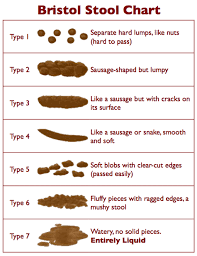(If you rather watch my video summarizing these things, click link above!)
Hemorrhoids and anal fissures are a real pain in the butt to deal with. And when you just gave birth and you have a newborn to take care of, the last thing you want is to cry out of pain on the toilet every time you have a bowel movement. So let’s make things easier for you mammas.
First, you may have hemorrhoids or anal fissures, or the whole package deal (both).
What is the difference between hemorrhoids and anal fissures?

Hemorrhoids are basically swollen veins that are bulging out of the rectum lining. They can be located internally (inside the rectum) and/or externally (outside of the anus). Some people have them and are not symptomatic (inactive hemorrhoids). A flared-up or active hemorrhoid is normally caused by recent increased of pressure in the pelvic area. For example, childbirth, pregnancy and severe constipation are common causes.
 An anal fissure is a small cut in the lining of the anus. It can be caused by childbirth, constipation, straining, passing large stool, and anal sex.
An anal fissure is a small cut in the lining of the anus. It can be caused by childbirth, constipation, straining, passing large stool, and anal sex.
What are the symptoms?
Both hemorrhoids and anal fissures can present the following symptoms:
- Pain with bowel movement often describes as if “you were passing sharp glass through your rectum”
- Blood on the toilet paper after bowel movement
If you do not have these symptoms but you have had them in the past, that means that your condition is under control (hemorrhoids are not active, or fissure is healed). That’s awesome!!! Keep it that way by following tips #1 et #3 below 🙂
What to do?
#1 Keep your stool soft!
The first thing to look at is the quality of your stool. Keep it as soft as you can – you do not want a hard stool to go through these painful spots, believe me! Target a #4 type stool on the Bristol Stool chart, like a snake or a soft sausage. Drink plenty of water and check your fibre intake – if you need more info, read my blog post about bowel health.

#2 Decrease inflammation

My number one to achieve this is a very natural way to decrease swelling: good ol’ ice! But how do you ice your butt hole? Using this wonderful device called the ANUREX which you keep in your freezer. It literally saves lives (according to my clients…!) – the best investment you will ever make to sooth the area. It comes with a little bottle of lube that you can put around it to make insertion easier. You basically insert the anurex in your rectum for a few minutes to help decreasing pain and swelling. I recommend using it 2-3x/day when things are flared-up.
There are other ways to decrease inflammation such as using topical prescription drugs. Some of my clients found lots of relief in Proctofoam which is a numbing foam with cortisone. It is used with an applicator that you gently insert in the anus. Ask your doctor 🙂
The other thing you should consider to decrease inflammation and pressure is to sit on a donut cushion (a cushion with a hole in the middle). This way, your anus will be free of pressure and it will be better for the healing process. You can find those cushions pretty much anywhere in health care stores or even Walmart.
#3 Squat to poo!
I cannot put more emphasis on the importance of the squat position during bowel movement!! I told you about it in my post about bowel health, and this was more as a preventative recommendation. But here my friends, I am telling you: you don’t have the choice anymore!! You need to get a Squatty Potty!!! Squatting during bowel movement relaxes the tension from your pelvic floor muscles around the rectum, and makes it easier to release stool without straining. Since avoiding to strain is huge in healing hemorrhoids and anal fissures, you really want to put all the chances on your side. The Squatty Potty is available at Canadian Tire (in the bathroom items aisle) or you can also purchase it online. Or else you use whatever you have at home to elevate your feet while you poop – however make sure it is high enough so your knees are higher than your hips!

I followed all these tips but I am still struggling….
OK – do not panic. You are not a lost cause, there are still a few things you could consider. First, go see a Pelvic Health PT to see if there is any tension in your pelvic floor that could make your stool more difficult to pass, thus restricting the healing of your condition. I learned a super powerful technique at the Institute for Birth Healing called the “anal sphincter release” and it has been working like a charm to reduce tensions around the anus and make more space for the stool to go through. It is a super gentle technique to relax the anal sphincter.
The last resort option is to consult your doctor and see if you would be a candidate for surgery. I would not recommend this option if your symptoms are still recent (<3 months), and you have not tried all of the above. Hemorrhoids can be removed through different procedures. But they are only removed if they are causing extreme pain and difficulty with bowel movement (that means – they won’t remove them for aesthetic reasons just because you don’t “like how they look” – anyway I swear you do not want to go through this surgery if you do not have symptoms, because the recovery is quite painful!)
I hope this gives you a few tools to manage your symptoms.
Sophie

